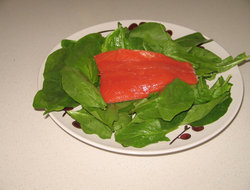Vitamin D and health
Published: November 05, 2020
Vitamins are essential micronutrients required for proper body function.
Unlike other vitamins, vitamin D, which is cholesterol based, is made in your body provided that your skin has sufficient exposure to sunshine and is often referred to as the sunhine vitamin.
Vitamin D has a number of functions in your body which include:
- Bone health through assisting the absorption and metabolism of calcium
- Cell differentiation, proliferation and growth: may inhibit cancer cell proliferation and growth, and also cell proliferation associated with psoriasis
As well as being made in your body, a process which is activated when your skin is exposed to the sun’s UV rays for sufficient time, Vitamin D can also be obtained from various food sources.
Good sources include:
- Fatty fish such as herring, salmon, sardines and tuna
- Liver
- Fortified milk and milk alternatives, and margarine
Cheese, milk, butter and margarine provide small amounts of vitamin D.
Vitamin D Deficiency
Vitamin D deficiency may occur for several reasons.
Darker skinned people, older people, people who spend very little time or no time out of doors in the sunshine, people who live in northern climates, people who are obese, and very fair skinned people may be at increased risk for vitamin D deficiency.
Breast milk is low in vitamin D which influences vitamin D levels in infants and young children who are breast fed. There may also be a genetic component which is related to vitamin D serum levels.
Low serum levels of vitamin D have also been identified in melanoma patients, and are associated with thicker melanoma tumours.
Vitamin D deficiency is suggested when blood/plasma concentrations are < 11 ng/ml, and subclinical deficiency at < 15ng/ml.
In children, vitamin D deficiency contributes to "rickets" a condition in which bones do not calcify even if there is adequate calcium in the diet.
As a child grows and begins to walk the weight of the body causes the legs to bow.
In adults, particularly women who have had several pregnancies followed by periods of breast feeding, vitamin D deficiency combined with low calcium intake may lead to osteomalacia.
As the bones weaken the body becomes stooped and the legs bowed.
Vitamin D deficiency also increases the risk of osteoporosis; the loss of calcium from bones. This leads to increased risk of bone fractures.
As people age...link to the full article to learn more about vitamin D and its role in your body and the pros and cons of vitamin D supplementation.
References
1.
Whitney, E. & Rady Rolfes, S. (2005). Understanding Nutrition. Belmont, CA: Thomson Wadsworth
2.
Gropper, S.S., Smith, J.L. & Groff, J.L. (2005). Advanced Nutrition and Human Metabolism (4thEd.). Belmont, CA: Thomson Wadsworth.
3.
Davies et al.(2011). The determinants of serum vitamin D levels in participants in a melanoma case-control study living in temperate climate. Cancer Causes Control, 22. 1471-1482.
4.
Centre for Science in the Public Interest. Nutrition Action Health Letter. March 2012, June 2012, October 2012, September 2013, December 2012, Jan/Feb 2013, May 2013, October 2013, November 2013, December 2013, March 2013, March 2014, September 2014, July/August 2014, December 2014

